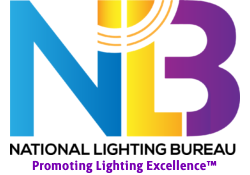Case Histories: Educational/Institutional Lighting
Lighting Increases Security, Discourages Theft and Vandalism
By John Philip Bachner
If it weren’t for budgets, meeting campus safety and property protection needs would be simple. But budgets are a fact of life, as are the other priorities that vie for budgetary attention. Are you doing all you can to secure your piece of the budgetary pie? The answer actually might be “no,” not because you’re not doing a good job, but rather because you may be overlooking the many valuable roles played by so-called “security lighting.”
The principle role of security lighting is obvious. In reality, however, it provides just about the best and the lowest cost security available, for property and people alike. Good lighting can encourage those up to no good to go elsewhere. And unlike security patrols, security lighting is where it’s most needed when it’s most needed, giving those who rely on it an opportunity to spot potential trouble in advance, and take precautionary measures.
At Bryant College in Smithfield, Rhode Island, lighting around the commuter parking lot was not effective enough to discourage vandalism of parked cars, break-ins, and thefts, nor was it sufficient to prevent an overabundance of vehicle/vehicle accidents. Students and teachers who parked there were concerned for their own safety as well as for their vehicles’ safety.
After new lighting was installed, the problems almost disappeared. From a short-term, bottom-line point of view, and using current value dollars, the school saved about $1,000 per year in accident clean-up costs, plus another $3,000 annually in vandalism avoidance. Students and faculty benefited, too, given that they avoided about $10,000 annually in fender-bender repair costs.
And, somewhat ironically, the improved lighting that permitted those savings cost 45% less per year to operate and maintain. And as for long-term benefits? According to the school’s director of physical plant, “There is a direct benefit to the school, its students, and the local community when it offers a safer, more hospitable, and more aesthetically pleasing environment.”
Because better security lighting helps people see more, faster; it may be possible to cut back on security patrols without compromising safety. That’s exactly what Central Michigan University (CMU) did, when officials decided to modify 244 existing pole-mounted walkway lights.
“Should we use 15OW high-pressure sodium (HPS) lamps and reduce energy consumption, or use 25OW HPS lamps and increase energy consumption?” And what was chosen? The 25OW lamps, because they produced so much more light, they permitted security patrol cutbacks. As a result, officials traded a modest cost increase for a substantial $10,000-per-year labor savings.
Insurance costs may also be positively affected by good security lighting. In light of today’s competition for the insurance dollar, insurance company underwriters are quick to give credit where it is due, providing you point out how improved lighting reduces risk, as well as the costly paperwork, claims, bad publicity, and lawsuits that can make realized risk even more onerous.
John Philip Bachner has served as executive vice president of the Property Management Association for almost a quarter century, and as the chief staff executive of the College of Property Management Foundation, the Mid-Atlantic Council of Shopping Center Managers, and the Design and Construction Quality Institute. He is also the author of The Guide to Practical Property Management (McGraw-Hill).
